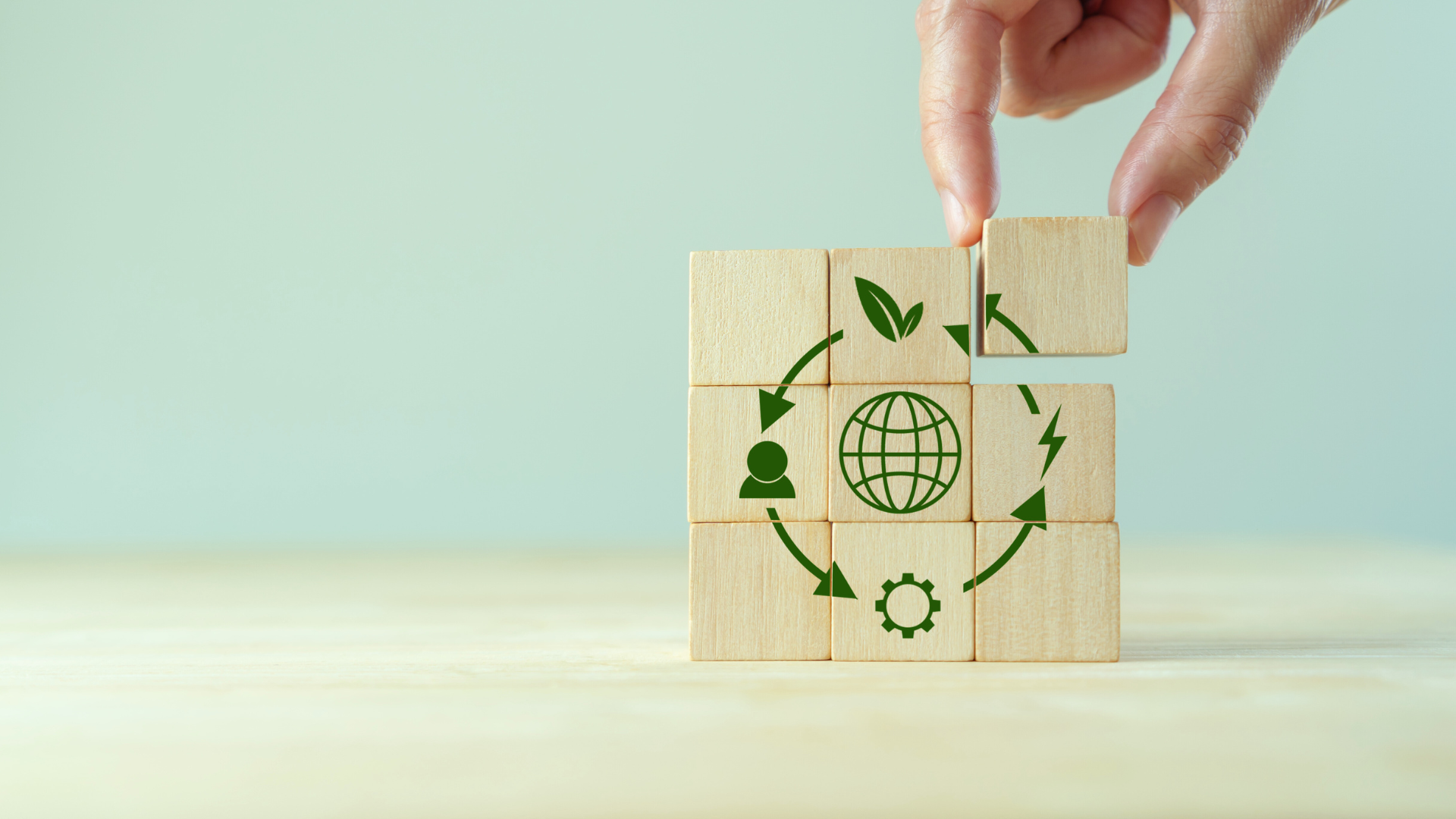
A circular economy is an economic system aimed at minimising waste and making the most of resources. In contrast to a linear economy, which follows a ‘take, make, dispose’ model, a circular economy promotes reusing, repairing, and recycling materials to extend their life cycle. This shift is crucial for fostering sustainability and addressing the urgent environmental challenges faced today.
Within a circular economy, products are designed with their end-of-life in mind, encouraging innovation in materials and processes. Businesses and consumers alike play a vital role in this transition by adopting practices that prioritise sustainability and resource efficiency. By understanding its principles, individuals and organisations can contribute to a more sustainable future.
The importance of a circular economy cannot be overstated, as it not only reduces environmental impact but also creates economic opportunities. With its potential to drive growth while preserving natural resources, it represents a significant evolution in how society approaches consumption and production. Embracing this model is essential for ensuring a healthier planet for future generations.
Understanding Circular Economy
The circular economy promotes sustainable practices by focusing on resource efficiency and waste minimisation. It seeks to create a system where materials are reused, refurbished, and recycled, contrasting sharply with traditional models of consumption.
Principles of Circularity
The circular economy is rooted in several key principles:
- Design for Longevity: Products are created with durability in mind to extend their life cycle.
- Resource Recovery: At the end of a product’s life, materials are recovered and repurposed.
- Waste Reduction: The goal is to minimise waste through efficient resource use.
- Regeneration: Systems are designed to restore natural environments and ecosystems.
These principles aim to keep resources in use as long as possible, reducing the environmental impact and promoting sustainability. Through strategies such as upcycling and closed-loop systems, circularity can effectively lower demand for new materials and energy.
Contrast with Linear Economy
The linear economy follows a “take-make-dispose” model. Resources are extracted, used to create products, and eventually discarded as waste. This model leads to:
- Increased Waste: As products reach the end of their life, they contribute to landfill overflow.
- Resource Depletion: Continuous extraction of materials can exhaust natural resources.
- Environmental Impact: The linear approach generates pollution during production and disposal.
In contrast, the circular economy values sustainability by prioritising resource efficiency. By shifting to a circular model, businesses can reduce environmental harm and enhance economic resilience.
Environmental and Economic Benefits
A circular economy offers distinct advantages by significantly reducing environmental impact and enhancing energy and resource efficiency. These benefits play a crucial role in addressing global sustainability challenges.
Reduced Environmental Impact
Transitioning to a circular economy can substantially lower the environmental impact associated with traditional linear models. By emphasising recycling, reusing, and remanufacturing materials, waste generation diminishes significantly. For instance, products designed for longevity and easy disassembly minimise material waste.
The focus on sustainable practices leads to reduced carbon emissions. According to recent studies, circular initiatives could cut greenhouse gas emissions by up to 70% in certain sectors. Additionally, this approach conserves biodiversity through responsible sourcing and reduced habitat destruction.
Effective water management is another critical benefit. Circular systems prioritise water reuse, minimising the strain on freshwater resources and decreasing pollution levels in water bodies.
Energy and Resource Efficiency
A circular economy promotes efficiency by maximising the use of existing resources. By prioritising the recovery and reuse of materials, there is a significant reduction in the need for new raw materials. This process also lowers energy consumption across the supply chain.
For example, recycling aluminium can save up to 95% of the energy required to produce it from bauxite. Similarly, the composting of organic waste transforms potential landfills into resources for agriculture, thereby reducing reliance on energy-intensive fertilisers.
Additionally, optimising energy use in production results in lower operational costs. Businesses adopting circular practices can enhance their competitiveness due to decreased material costs and increased resilience against supply chain disruptions.
Implementing a Circular Economy
Implementing a circular economy requires strategic changes in business practices, regulatory frameworks, and stakeholder engagement. Key aspects involve extended producer responsibility, innovative business models, and addressing challenges that arise during implementation.
Role of Extended Producer Responsibility
Extended Producer Responsibility (EPR) serves as a pivotal mechanism in a circular economy. EPR holds producers accountable for the entire lifecycle of their products. This includes design, manufacturing, recycling, and disposal.
Producers are incentivised to design products that are easier to repair, reuse, or recycle. This approach encourages sustainable practices and fosters a more circular supply chain.
Stakeholders, including governments and non-profits, play a vital role in enforcing and guiding EPR policies. They can establish regulations that encourage compliance while providing support for recycling and waste management initiatives.
Circular Business Models
Circular business models offer innovative ways to reduce waste and optimise resource use. These models might include product-as-a-service, where consumers pay for the service a product provides rather than owning the product itself.
Examples of circular business models include:
- Leasing: Companies retain ownership, ensuring products are returned for refurbishment and reuse.
- Take-back schemes: Consumers return end-of-life products for recycling or repurposing.
By adopting these models, businesses can foster long-term relationships with customers and improve resource efficiency. This transition not only benefits the environment but can lead to reduced costs and increased competitiveness in the market.
Challenges in Implementation
Transitioning to a circular economy presents several challenges that organisations must navigate. First, there is the complexity of redesigning existing systems and processes to align with circular principles.
Second, collaboration among various stakeholders is essential, yet it can be difficult. Different interests and priorities may hinder communication and progress.
Additionally, there can be financial barriers. Upfront investments in new technologies and processes are often substantial. Securing funding and demonstrating the economic benefits of a circular approach can be crucial for successful implementation.
Addressing these challenges requires strategic planning, stakeholder engagement, and the willingness to innovate.
Case Studies and Global Initiatives
Examples of successful circular economy practices and effective national and international policies highlight the growing importance of this model. The following sections explore specific instances and regulatory frameworks that champion circularity across various sectors.
Successful Circular Economy Examples
One prominent example is the Deposit Return Scheme (DRS) in several countries. This initiative encourages consumers to return beverage containers for a small refund. Such systems have significantly increased recycling rates and reduced litter.
Another notable case involves remanufacturing in the automotive industry. Companies like BMW have adopted practices to reclaim and refurnish parts, thereby reducing waste and conserving resources. This approach not only extends product life but also creates economic opportunities.
In the food sector, organisations are focusing on reducing food waste. Initiatives like community composting and partnerships with food banks help redirect surplus food to those in need, demonstrating effective utilisation of resources.
National and International Policies
Various governments have enacted policies to support circular economies. The European Union’s Circular Economy Action Plan aims to promote sustainable resource use across member states. This plan includes measures to reduce waste and enhance product longevity.
Countries like Japan have implemented stricter regulations on waste management through the Basic Law for Establishing a Recycling-Based Society. This legislation emphasises recycling, waste reduction, and the promotion of sustainable practices among citizens and businesses.
Investors are also increasingly prioritising companies that adopt circular economy principles. This shift encourages further innovation and investment in sustainable technologies, reinforcing the economic viability of a circular approach. Such policies and investment strategies are critical as the world moves towards a more sustainable future.
